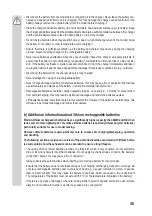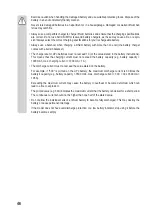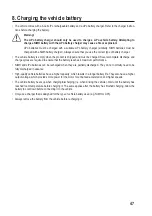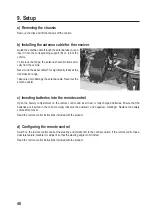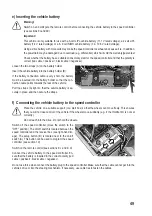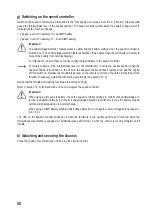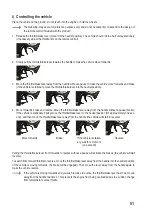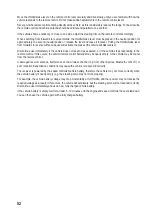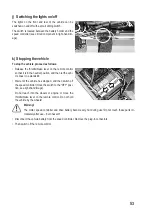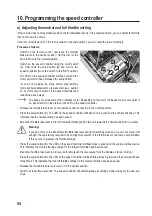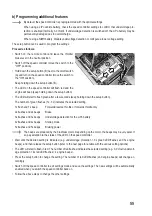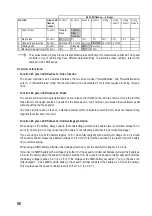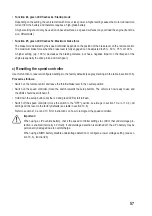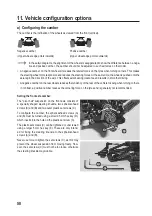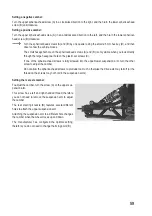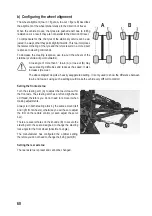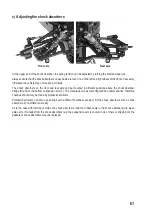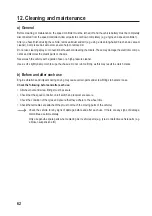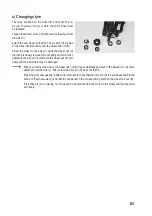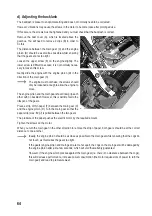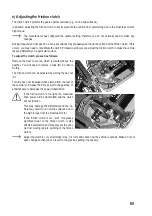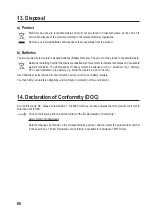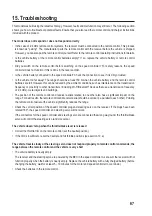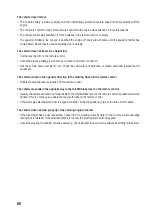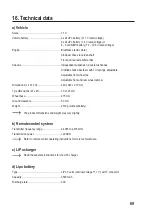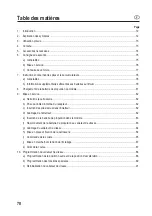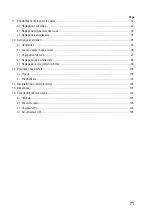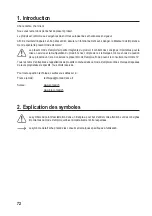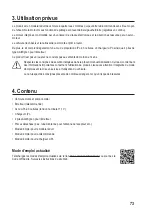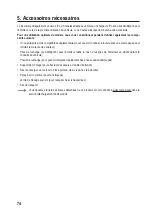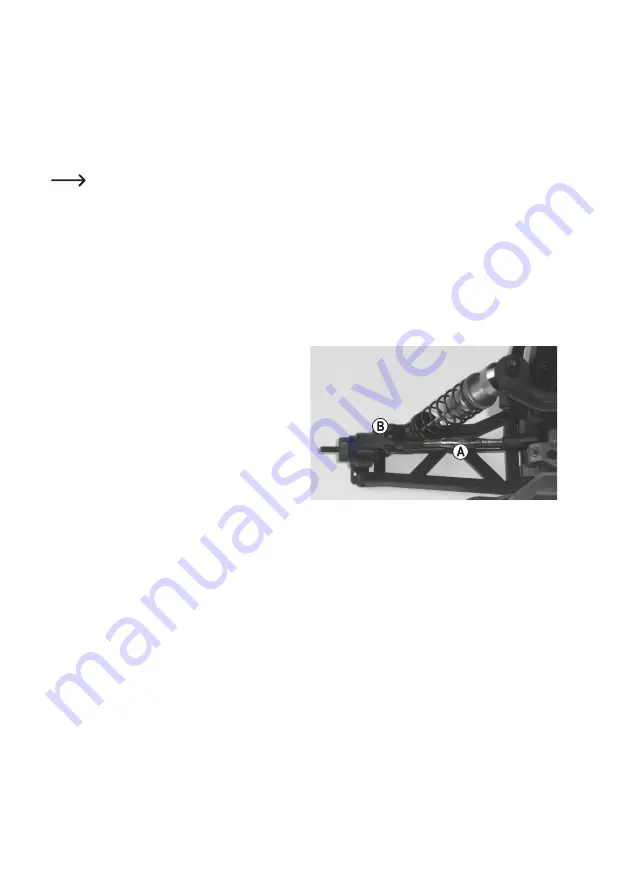
59
Setting a negative camber:
Turn the upper spherical-head screw (A) in a clockwise direction to the right, and then turn the lower spherical-head
screw (B) anticlockwise.
Setting a positive camber:
Turn the upper spherical-head screw (A) in an anticlockwise direction to the left, and then turn the lower spherical-
head screw (B) clockwise.
Turn the spherical-head screws (A) and (B) by one quarter using the small 2.5 mm hex key (D), and then
observe how the vehicle moves.
The small hexagonal hole on the spherical-head screws (A) and (B) is only visible when you look directly
through the large hexagonal hole on the plastic set screws (C).
If one of the spherical-head screws is fully screwed into the upper/lower suspension arm, turn the other
screw to adjust the camber.
Do not allow the spherical-head screws to protrude too much, otherwise the drive axle may fall off (or the
thread on the screws may not hold in the suspension arms).
Setting the rear axle camber:
To adjust the camber, turn the screw (A) on the upper sus-
pension arm.
This screw has a left and right-handed thread, therefore
you do not need to remove the suspension arm to adjust
the camber.
The rear steering knuckle (B) features several different
holes to attach the upper suspension arm.
Attaching the suspension arm to a different hole changes
the camber when the wheel moves up and down.
The manufacturer has configured the optimal setting,
therefore you do not need to change the fixing point (B).
Summary of Contents for 1648548
Page 138: ...138 ...
Page 139: ...139 ...

